Inside Tryouts for the Washington Nationals’ Famous Racing Presidents
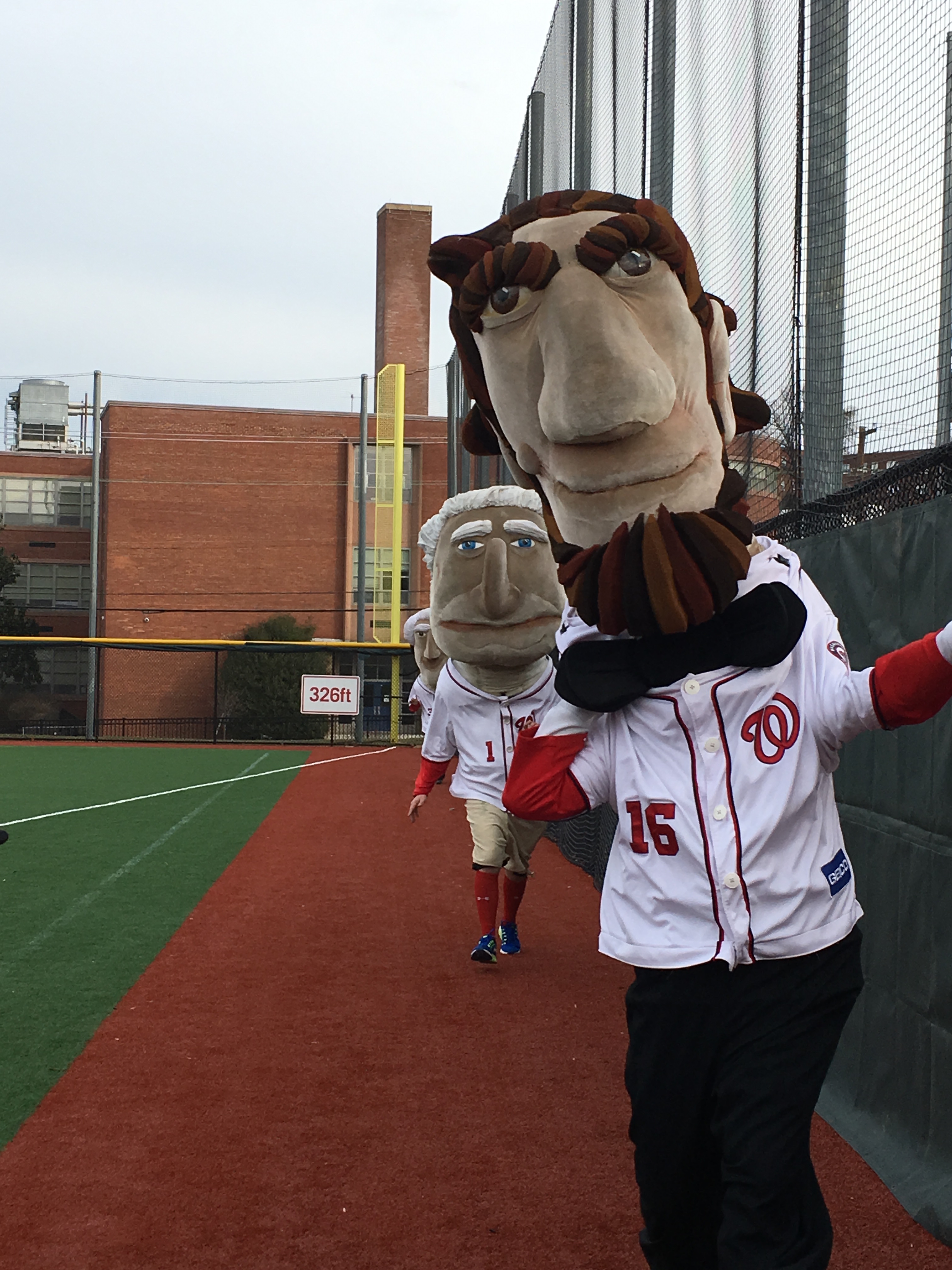
The Phil Collins Pandora station cut through the cold air just before 9am on a January day in Washington, DC. In the shadow of the DC Police horse barn, on the grounds of the Washington Nationals Youth Academy, 34 men gathered to hear National’s Director of Entertainment Tom Davis outline the morning’s activities.
Today, for the 11th straight year, and 3rd at the Youth Academy, the Nationals were holding tryouts to find the lucky few who would don the famous Racing Presidents costumes at 81 Nats home games this year, as well as countless parties, receptions, grand openings, and even weddings. Apparently, the Phil Collins Pandora station, with ads, is a bit of a tradition.
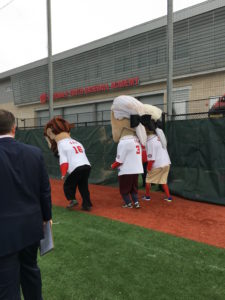
The Presidents prepare for the first long race of the day
The brave men (in the past women had tried out as well, but this year all 34 hopefuls were men) here today had made it past the preliminary screening, which includes a standard resume and cover letter, and had reached the final stage of the application process: the last step between them and their dreams of professional mascottery.
But it wouldn’t be easy. Tom explained that the tryout would include multiple parts: a 40 yard dash (actually, a 20 yard dash with your time multiplied by 2), 2 long distance races, a freestyle dance, a ‘victory pose,’ and an interview. Each candidate would complete everything but the interview in the full mascot uniform.
Today, Abe, Tom, and George were the lucky mascots, Teddy and Will were otherwise disposed. Each president weighs more than 40 lbs and is extremely cumbersome. The pros make walking around in one, much less sprinting, look a lot easier than it is.
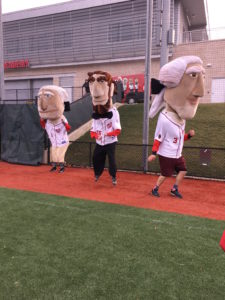
George, Abe, and Tom compete in the freestyle dance portion of the tryout.
Each candidate was timed during the races, but speed is only one factor in determining the eventual lucky few. More important is teamwork since the mascots will spend so much time together on and off the field. It’s vital that everyone get along, be outgoing and gregarious, and form a cohesive unit. The finer technical points can always be taught later. Of the 34 contestants, the Nationals have no set number they expect to hire. They plan to take all the good ones. They need 5, but if 15 prove deserving, all the better to help compensate for the inevitable scheduling conflicts that will later arise.
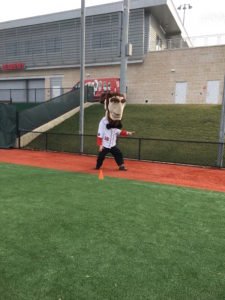
Abe prepares for the ’40’ yard dash
All the guys there were thrilled for the opportunity to finally put on the big foam heads. Many had been practicing their freestyle dance moves and victory poses for weeks. A surprising number were software engineers by day, actually, and nearly all said they’d figure out the logistical challenges of getting to all 81 home games later if they got the gig.
From the very first heat, it was clear this was harder than it looks from the upper deck. Some of the candidates were experienced mascots but they had trouble just staying on their feet. You pick it up quickly, but the sensation of having 40 lbs swaying above your head (the mascots are all about 7 feet tall) is a strange one. Course corrections while running have to be done very carefully.
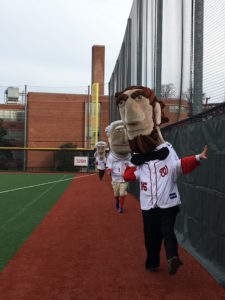
A sprint to the finish in one of the long race heats
Since candidates tried out in groups of 3, 31 guys were always watching, and cheering on their fellow hopefuls. In each heat, there was seemingly 1 guy who struggled a little more than the rest, and in each heat, he was the subject of all the cheers and encouragement from the crowd. Mascots, it seems, stick together.
I took my turn inside Tom Jefferson later in the day. It went…. well, I guess. Read about it, and watch the videos, here.
-Max Frankel












